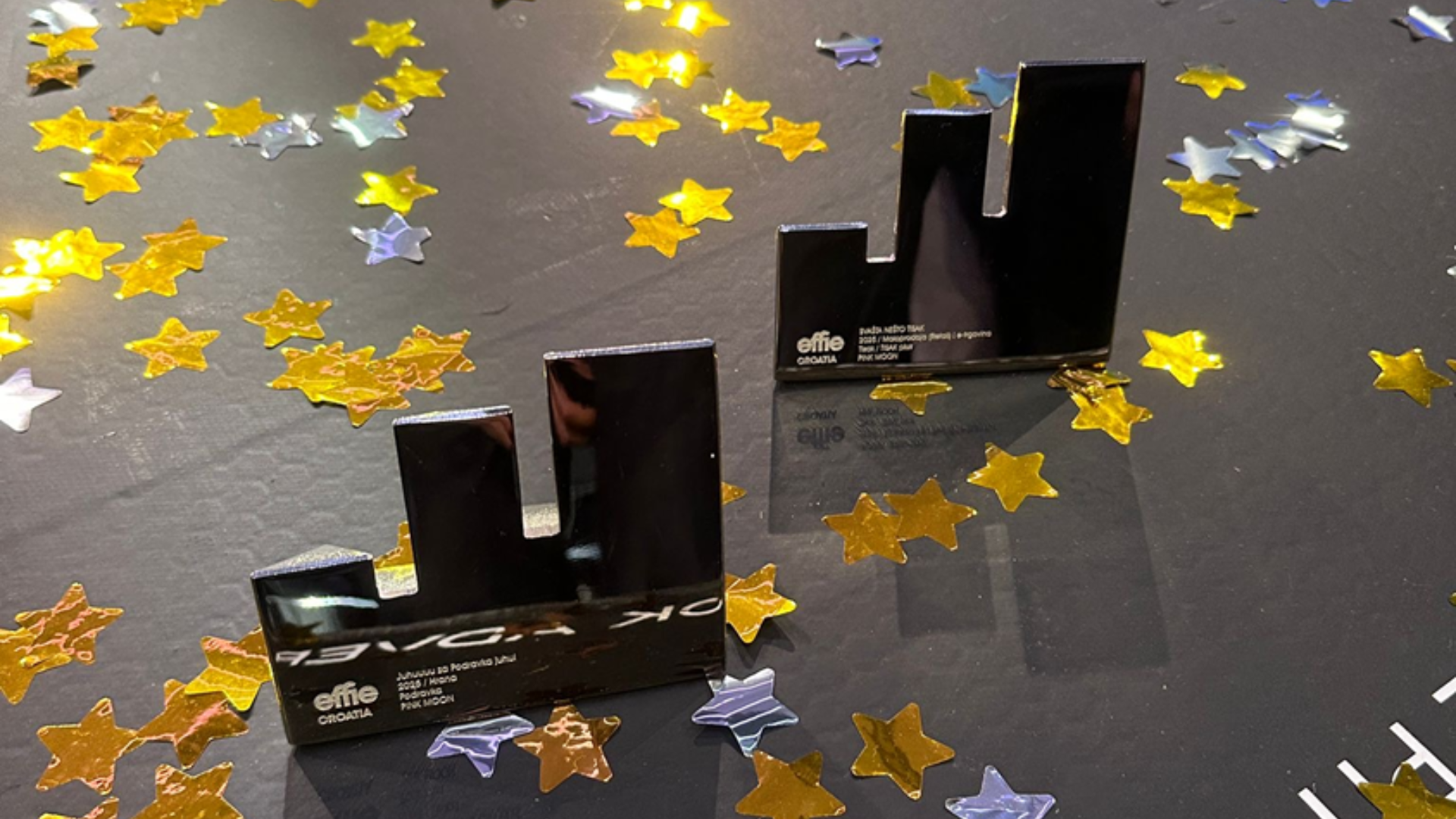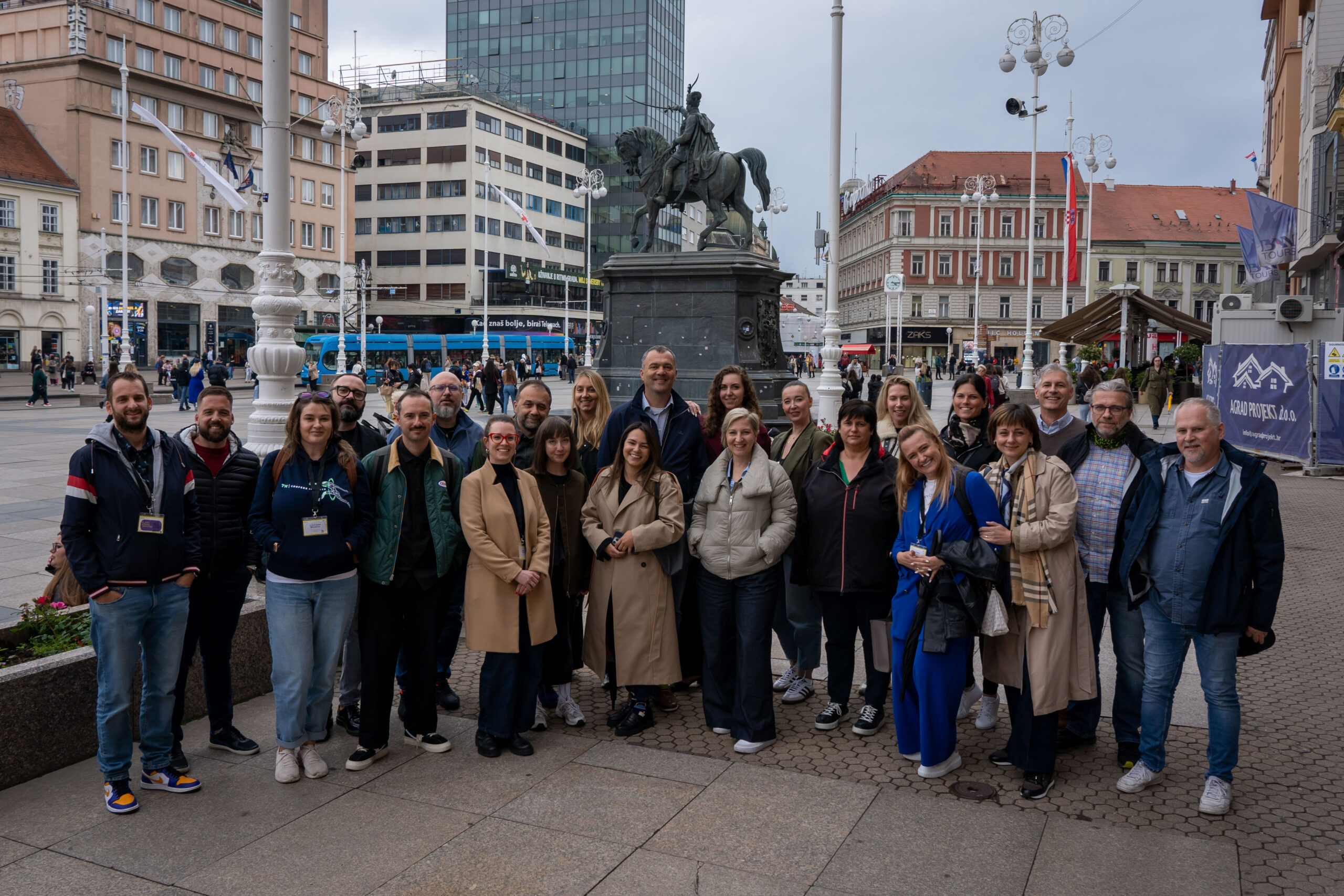The moment I realized I’m not young anymore in the traditional sense (I’m 32, which means I’m middle aged) came through about two years ago when my team and I started to work on CokeStream, a platform to reach and engage Hungarian teens and young adults, focusing on video content.
I knew, even back then, that YouTube is an important part of any company’s content strategy, especially of those who target the younger demographic groups. I believed that I’m familiar with all the important trends, influencers, and generally with all that’s happening on YouTube. Boy, was I wrong!
We wanted to tap into the network of the most important influencers, so we started to watch hours and hours of vlogs, jumping from one video to another. That’s when a new world opened up to me. I never imagined that I would find countless new video stars (with followers of tens or even hundreds of thousands – mind you, I’m talking about Hungary), vlogging about things that I would never think anybody would be interested in. Books they’d read, cosmetics they’d tried, reactions to other vloggers videos, how they studied, or just in general what they were doing and how they were feeling at the moment. It changed the way I think of the platform forever.
The beginning
YouTube was born in 2005, with the original purpose of making it easier to upload videos, and post them on blogs. Shortly, YouTube became a destination of its own, and traditional TV companies started to create content, exploiting the growing power of the internet. The big change took place in 2012, as by then, viewers were drawn to the niche content that they could actively select. The era of the whole family sitting around a TV and watching the same programme ended. While cable television could offer us hundreds of channels, YouTube gives us millions.
YouTube is definitely changing the way we consume video. But is it the new TV? And if so, for whom?
User habits
Having spent time with regional stats of the platform’s usage (edited: the data cited in this article concerns 9 CEE countries, while the rest of the report deals with 14 countries in Central and Eastern Europe), it’s safe to say that it’s part of people’s daily online routine today. Looking at the active user base of YouTube, its average is well above 70% throughout the region. While it’s only 60% in Rusia (where it’s the lowest), it’s 80% in Croatia, scoring as highest.
 Usage is high – across all age groups, but is truly outstanding within the target group of people less than 25. In some countries (like Croatia or Bulgaria), 97% of YouTube users of this age group visit the platform at least once a week. The everyday usage by the same age group is by far the highest in Croatia (72%).
There is a broad range of content to watch on YouTube, including those that are common on TV. What makes YouTube stand out is the fact that as you go lower in age groups, users prefer it (to TV) more and more and find it more relevant for themselves. Younger people across the region use YouTube more than watching TV – making it an excellent opportunity for brands and marketers to connect with a large, ever growing audience. The highest numbers of usage are in the Baltics and Poland, where YouTube has already become superior to watching TV.
Usage is high – across all age groups, but is truly outstanding within the target group of people less than 25. In some countries (like Croatia or Bulgaria), 97% of YouTube users of this age group visit the platform at least once a week. The everyday usage by the same age group is by far the highest in Croatia (72%).
There is a broad range of content to watch on YouTube, including those that are common on TV. What makes YouTube stand out is the fact that as you go lower in age groups, users prefer it (to TV) more and more and find it more relevant for themselves. Younger people across the region use YouTube more than watching TV – making it an excellent opportunity for brands and marketers to connect with a large, ever growing audience. The highest numbers of usage are in the Baltics and Poland, where YouTube has already become superior to watching TV.
 From a marketer’s perspective, YouTube is good for campaigns, as a broad and varied audience can be targeted here. The average user is an active digital content consumer and a big portion of them are tech savvy.
If you take a look at the factors of why people across all age groups turn to YouTube, it’s the same as with the internet in general. To have fun. The vast majority of users watched TV or other entertainment content during their last YouTube session, and they are the most interested in music and movies of all content.
The most popular local music videos in 14 CEE countries in 2015
https://youtu.be/UylZ_e2mAFk?list=PLX-kiDOGuwVPlnUUPEhcsYSogmUkB_Unl
Should you want to connect with these users, you need to focus on compelling content, may it be a sponsored video or a pre-roll ad. Successful ads on YouTube help people feel entertained and relaxed, so the rate of skipping ads seems to lower through time.
But fun is only a part of their motivation when using the internet. Most YouTube users already manage or start to manage their life online. And frankly, who wouldn’t? Experts say that online shopping is not only popular because one doesn’t have to carry the groceries home, but also for being able to avoid the presence of other people.
Mobile is increasingly important
As using smartphones has become general, content consumption tends to shift in the direction of mobile, too. The region’s countries’ YouTube users access the platform on mobile (averaging between 60-70%). Desktop is not forgotten though, around third of the users watch content both on mobile and computers.
From a marketer’s perspective, YouTube is good for campaigns, as a broad and varied audience can be targeted here. The average user is an active digital content consumer and a big portion of them are tech savvy.
If you take a look at the factors of why people across all age groups turn to YouTube, it’s the same as with the internet in general. To have fun. The vast majority of users watched TV or other entertainment content during their last YouTube session, and they are the most interested in music and movies of all content.
The most popular local music videos in 14 CEE countries in 2015
https://youtu.be/UylZ_e2mAFk?list=PLX-kiDOGuwVPlnUUPEhcsYSogmUkB_Unl
Should you want to connect with these users, you need to focus on compelling content, may it be a sponsored video or a pre-roll ad. Successful ads on YouTube help people feel entertained and relaxed, so the rate of skipping ads seems to lower through time.
But fun is only a part of their motivation when using the internet. Most YouTube users already manage or start to manage their life online. And frankly, who wouldn’t? Experts say that online shopping is not only popular because one doesn’t have to carry the groceries home, but also for being able to avoid the presence of other people.
Mobile is increasingly important
As using smartphones has become general, content consumption tends to shift in the direction of mobile, too. The region’s countries’ YouTube users access the platform on mobile (averaging between 60-70%). Desktop is not forgotten though, around third of the users watch content both on mobile and computers.
 And when do they do it? Same as with other recreational activities, late afternoons and evenings are the most common time slots of usage. However, probably one of the most significant distinction from TV is that watching YouTube videos does not require a certain place. Surveys show that ’YouTube moments’ can actually happen anywhere. At home and on-the-go, too. More than 90% of users still watch videos at home, but usage in commuting and office hours is becoming more and more popular. This emerging trend might be the reason why the preferred length of videos is becoming shorter. According to statistics, a YouTube video is at its best if it’s cca. 5 minutes long. The only countries in the region where people prefer videos longer than 10 minutes are Ukraine and Russia.
Focused watching
Google’s YouTube profiling shows that 45-65% of these so-called “YouTube moments” in Central and Eastern Europe happen when other devices are running in parallel. No surprise here, we are all drawn to our beloved second screen, no matter what is on TV. Though while watching TV is mostly not deliberately motivated, using YouTube is; so the majority of users stay focused while watching videos there.
So, is YouTube the new TV? Time is still needed to decide that. But it’s a fact that with using several devices in parallel and focusing on many things at the same time, watching TV becomes less and less popular, especially among youngsters. YouTube is well-known and frequently used in all age groups, but usage (considering all factors) is the strongest with those under 25. And should this trend continue, the next generation of digital native users will require that brands and marketers change their focus from broadcasting advertising to a more relevant, precisely targeted way of planning campaigns. Many still think that you need TV for branding and image building. But I beg leave to disagree. As YouTube is becoming more and more relevant within the younger demographic groups, we need to practise introspection and turn to online and social platforms, where we might not have the same, broad reach as on TV, but using the insights we can gain during a campaign’s analysis, we can make sure that we reach exactly those we want to and can be sure that our message got through.
All data cited in this article was originally published by Google in the Consumer Barometer 2014 and the Connected Consumer Survey 2015.
Author: Gabor Varga, Digital Business Director, Café Communications
The article was originally published in the CANnual Report 2016. For more information on the advertising markets of Central and Eastern Europe you can order the report here.
And when do they do it? Same as with other recreational activities, late afternoons and evenings are the most common time slots of usage. However, probably one of the most significant distinction from TV is that watching YouTube videos does not require a certain place. Surveys show that ’YouTube moments’ can actually happen anywhere. At home and on-the-go, too. More than 90% of users still watch videos at home, but usage in commuting and office hours is becoming more and more popular. This emerging trend might be the reason why the preferred length of videos is becoming shorter. According to statistics, a YouTube video is at its best if it’s cca. 5 minutes long. The only countries in the region where people prefer videos longer than 10 minutes are Ukraine and Russia.
Focused watching
Google’s YouTube profiling shows that 45-65% of these so-called “YouTube moments” in Central and Eastern Europe happen when other devices are running in parallel. No surprise here, we are all drawn to our beloved second screen, no matter what is on TV. Though while watching TV is mostly not deliberately motivated, using YouTube is; so the majority of users stay focused while watching videos there.
So, is YouTube the new TV? Time is still needed to decide that. But it’s a fact that with using several devices in parallel and focusing on many things at the same time, watching TV becomes less and less popular, especially among youngsters. YouTube is well-known and frequently used in all age groups, but usage (considering all factors) is the strongest with those under 25. And should this trend continue, the next generation of digital native users will require that brands and marketers change their focus from broadcasting advertising to a more relevant, precisely targeted way of planning campaigns. Many still think that you need TV for branding and image building. But I beg leave to disagree. As YouTube is becoming more and more relevant within the younger demographic groups, we need to practise introspection and turn to online and social platforms, where we might not have the same, broad reach as on TV, but using the insights we can gain during a campaign’s analysis, we can make sure that we reach exactly those we want to and can be sure that our message got through.
All data cited in this article was originally published by Google in the Consumer Barometer 2014 and the Connected Consumer Survey 2015.
Author: Gabor Varga, Digital Business Director, Café Communications
The article was originally published in the CANnual Report 2016. For more information on the advertising markets of Central and Eastern Europe you can order the report here.
 Usage is high – across all age groups, but is truly outstanding within the target group of people less than 25. In some countries (like Croatia or Bulgaria), 97% of YouTube users of this age group visit the platform at least once a week. The everyday usage by the same age group is by far the highest in Croatia (72%).
There is a broad range of content to watch on YouTube, including those that are common on TV. What makes YouTube stand out is the fact that as you go lower in age groups, users prefer it (to TV) more and more and find it more relevant for themselves. Younger people across the region use YouTube more than watching TV – making it an excellent opportunity for brands and marketers to connect with a large, ever growing audience. The highest numbers of usage are in the Baltics and Poland, where YouTube has already become superior to watching TV.
Usage is high – across all age groups, but is truly outstanding within the target group of people less than 25. In some countries (like Croatia or Bulgaria), 97% of YouTube users of this age group visit the platform at least once a week. The everyday usage by the same age group is by far the highest in Croatia (72%).
There is a broad range of content to watch on YouTube, including those that are common on TV. What makes YouTube stand out is the fact that as you go lower in age groups, users prefer it (to TV) more and more and find it more relevant for themselves. Younger people across the region use YouTube more than watching TV – making it an excellent opportunity for brands and marketers to connect with a large, ever growing audience. The highest numbers of usage are in the Baltics and Poland, where YouTube has already become superior to watching TV.
 From a marketer’s perspective, YouTube is good for campaigns, as a broad and varied audience can be targeted here. The average user is an active digital content consumer and a big portion of them are tech savvy.
If you take a look at the factors of why people across all age groups turn to YouTube, it’s the same as with the internet in general. To have fun. The vast majority of users watched TV or other entertainment content during their last YouTube session, and they are the most interested in music and movies of all content.
The most popular local music videos in 14 CEE countries in 2015
https://youtu.be/UylZ_e2mAFk?list=PLX-kiDOGuwVPlnUUPEhcsYSogmUkB_Unl
Should you want to connect with these users, you need to focus on compelling content, may it be a sponsored video or a pre-roll ad. Successful ads on YouTube help people feel entertained and relaxed, so the rate of skipping ads seems to lower through time.
But fun is only a part of their motivation when using the internet. Most YouTube users already manage or start to manage their life online. And frankly, who wouldn’t? Experts say that online shopping is not only popular because one doesn’t have to carry the groceries home, but also for being able to avoid the presence of other people.
Mobile is increasingly important
As using smartphones has become general, content consumption tends to shift in the direction of mobile, too. The region’s countries’ YouTube users access the platform on mobile (averaging between 60-70%). Desktop is not forgotten though, around third of the users watch content both on mobile and computers.
From a marketer’s perspective, YouTube is good for campaigns, as a broad and varied audience can be targeted here. The average user is an active digital content consumer and a big portion of them are tech savvy.
If you take a look at the factors of why people across all age groups turn to YouTube, it’s the same as with the internet in general. To have fun. The vast majority of users watched TV or other entertainment content during their last YouTube session, and they are the most interested in music and movies of all content.
The most popular local music videos in 14 CEE countries in 2015
https://youtu.be/UylZ_e2mAFk?list=PLX-kiDOGuwVPlnUUPEhcsYSogmUkB_Unl
Should you want to connect with these users, you need to focus on compelling content, may it be a sponsored video or a pre-roll ad. Successful ads on YouTube help people feel entertained and relaxed, so the rate of skipping ads seems to lower through time.
But fun is only a part of their motivation when using the internet. Most YouTube users already manage or start to manage their life online. And frankly, who wouldn’t? Experts say that online shopping is not only popular because one doesn’t have to carry the groceries home, but also for being able to avoid the presence of other people.
Mobile is increasingly important
As using smartphones has become general, content consumption tends to shift in the direction of mobile, too. The region’s countries’ YouTube users access the platform on mobile (averaging between 60-70%). Desktop is not forgotten though, around third of the users watch content both on mobile and computers.
 And when do they do it? Same as with other recreational activities, late afternoons and evenings are the most common time slots of usage. However, probably one of the most significant distinction from TV is that watching YouTube videos does not require a certain place. Surveys show that ’YouTube moments’ can actually happen anywhere. At home and on-the-go, too. More than 90% of users still watch videos at home, but usage in commuting and office hours is becoming more and more popular. This emerging trend might be the reason why the preferred length of videos is becoming shorter. According to statistics, a YouTube video is at its best if it’s cca. 5 minutes long. The only countries in the region where people prefer videos longer than 10 minutes are Ukraine and Russia.
Focused watching
Google’s YouTube profiling shows that 45-65% of these so-called “YouTube moments” in Central and Eastern Europe happen when other devices are running in parallel. No surprise here, we are all drawn to our beloved second screen, no matter what is on TV. Though while watching TV is mostly not deliberately motivated, using YouTube is; so the majority of users stay focused while watching videos there.
So, is YouTube the new TV? Time is still needed to decide that. But it’s a fact that with using several devices in parallel and focusing on many things at the same time, watching TV becomes less and less popular, especially among youngsters. YouTube is well-known and frequently used in all age groups, but usage (considering all factors) is the strongest with those under 25. And should this trend continue, the next generation of digital native users will require that brands and marketers change their focus from broadcasting advertising to a more relevant, precisely targeted way of planning campaigns. Many still think that you need TV for branding and image building. But I beg leave to disagree. As YouTube is becoming more and more relevant within the younger demographic groups, we need to practise introspection and turn to online and social platforms, where we might not have the same, broad reach as on TV, but using the insights we can gain during a campaign’s analysis, we can make sure that we reach exactly those we want to and can be sure that our message got through.
All data cited in this article was originally published by Google in the Consumer Barometer 2014 and the Connected Consumer Survey 2015.
Author: Gabor Varga, Digital Business Director, Café Communications
The article was originally published in the CANnual Report 2016. For more information on the advertising markets of Central and Eastern Europe you can order the report here.
And when do they do it? Same as with other recreational activities, late afternoons and evenings are the most common time slots of usage. However, probably one of the most significant distinction from TV is that watching YouTube videos does not require a certain place. Surveys show that ’YouTube moments’ can actually happen anywhere. At home and on-the-go, too. More than 90% of users still watch videos at home, but usage in commuting and office hours is becoming more and more popular. This emerging trend might be the reason why the preferred length of videos is becoming shorter. According to statistics, a YouTube video is at its best if it’s cca. 5 minutes long. The only countries in the region where people prefer videos longer than 10 minutes are Ukraine and Russia.
Focused watching
Google’s YouTube profiling shows that 45-65% of these so-called “YouTube moments” in Central and Eastern Europe happen when other devices are running in parallel. No surprise here, we are all drawn to our beloved second screen, no matter what is on TV. Though while watching TV is mostly not deliberately motivated, using YouTube is; so the majority of users stay focused while watching videos there.
So, is YouTube the new TV? Time is still needed to decide that. But it’s a fact that with using several devices in parallel and focusing on many things at the same time, watching TV becomes less and less popular, especially among youngsters. YouTube is well-known and frequently used in all age groups, but usage (considering all factors) is the strongest with those under 25. And should this trend continue, the next generation of digital native users will require that brands and marketers change their focus from broadcasting advertising to a more relevant, precisely targeted way of planning campaigns. Many still think that you need TV for branding and image building. But I beg leave to disagree. As YouTube is becoming more and more relevant within the younger demographic groups, we need to practise introspection and turn to online and social platforms, where we might not have the same, broad reach as on TV, but using the insights we can gain during a campaign’s analysis, we can make sure that we reach exactly those we want to and can be sure that our message got through.
All data cited in this article was originally published by Google in the Consumer Barometer 2014 and the Connected Consumer Survey 2015.
Author: Gabor Varga, Digital Business Director, Café Communications
The article was originally published in the CANnual Report 2016. For more information on the advertising markets of Central and Eastern Europe you can order the report here.












